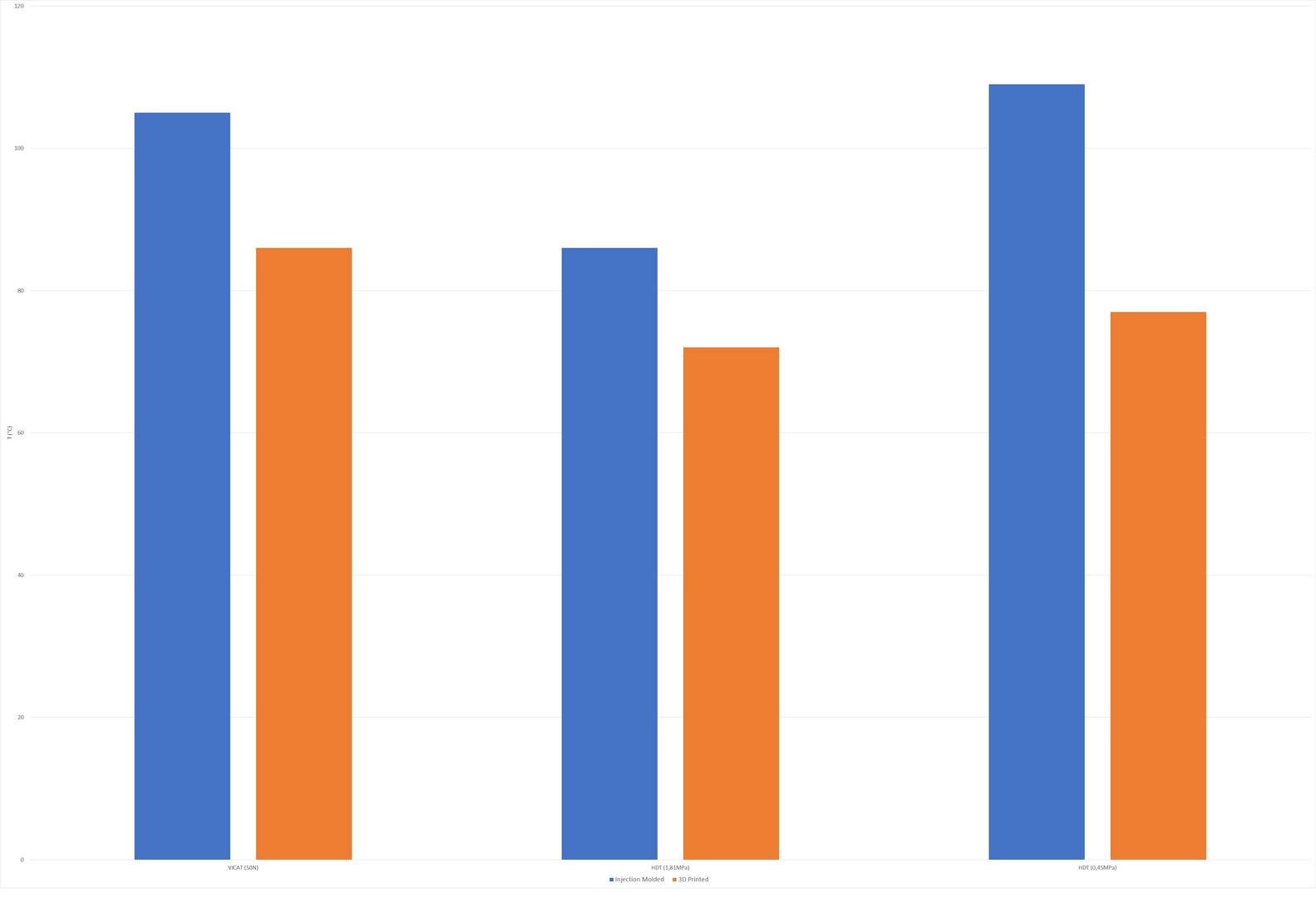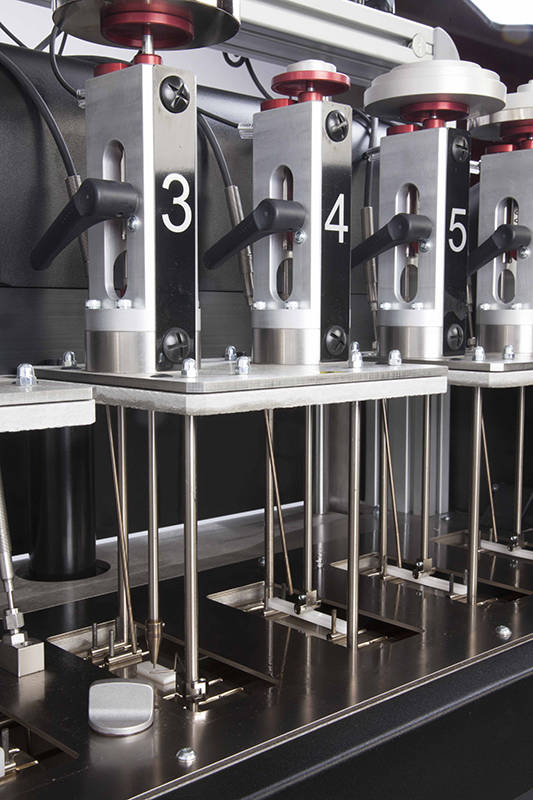
Measuring the heat deflection temperature (HDT) and Vicat softening temperature of 3D printing materials presents unique challenges. The need to test constantly-evolving materials without adequate norms means that repeatability can be an issue. Here we look at how new standards combined with the latest HDT Vicat tester technology can pave the way for more repeatable testing.
3D printing vs. injection molding
Injection molding remains a widely adopted plastics manufacturing method for mass-produced goods. However, 3D printing - or additive manufacturing - has become a highly competitive technology for smaller-scale manufacturing of parts and products.
There are significant differences between injection molded and 3D printed materials. Unlike injection molded products, the mechanical performance of 3D printing materials can vary significantly depending on specific printing conditions, including:
- Temperature;
- Printing speed;
- Layer height;
- Shell thickness; and
- Infill percentage and orientation.
These variations can affect the repeatability of test results. Consequently, the actual mechanical properties of a 3D printing material may differ quite significantly from the technical datasheet.
Why current HDT and Vicat standards aren’t fit for the purpose
HDT and Vicat testing is critical to validating the performance of high-performance 3D printing materials. These engineering thermoplastics are used in multiple applications from aerospace to automotive and biomedical tech. However, the current HDT and Vicat test methods are unsuitable for 3D printing materials. The main reason is that these tests were initially designed around injected-molded samples.
The primary standards regulating heat detection temperature testing are ASTM D648 and ISO 75-2. The norms for Vicat softening temperature testing are ASTM D1525 and ISO 306. When applied to 3D printed samples, these test methods tend to underestimate their heat deflection and Vicat temperatures. The main reason is that 3D printed samples tend to be less compact and porous than their injection model equivalents. Other parameters like infill percentage and shell thickness may skew the test results further.

Performing more tests on more materials
The lack of adequate standards means that tests may be repeated several times to validate the performance of a 3D printed material. Tests may be re-run using different samples, printed under different conditions, to account for variations in the HDT and Vicat temperature. Consequently, 3D printing materials will often need to undergo more tests than their injection molded equivalents.
Another factor to consider is the growing demand for 3D printed parts and finished products that drive the development of new materials. For example, LATI develops between 80 and 100 new materials yearly, half for 3D printing. Materials innovation is a journey of discovery that inevitably requires frequent testing in the absence of relevant literature.
How to make HDT and Vicat tests simpler and faster
User-friendly HDT Vicat tester technology can significantly reduce downtime, helping companies like LATI maintain high throughput despite increasing test volumes.
New generation machines from Instron come with intuitive software. Preprogrammed test method templates and integrated touch screen interfaces simplify the use of HDT Vicat testers, reducing test setup time. Even an intern with little-to-none training can quickly learn how to operate these machines, leaving little room for human errors.
Instron has also developed automated functions like zero checks and calibrations, typically performed manually, reducing setup time further.

Preparing for the Future
New norms that set specific printing conditions to perform tests would undoubtedly lead to more repeatable and comparable results. In addition, with more accurate and consistent data at hand, materials producers can run multiple software simulations of a material's mechanical and rheological behavior, enabling further innovation.
Instron’s HDT Vicat tester technology is designed to support any developments in test standards. The latest software features pre-formatted test method templates - based on the primary ISO and ASTM standards – that significantly simplify and speed up setup. In addition, the software saves the test settings automatically, ensuring tests are performed each time consistently, preventing accidental changes over multiple shifts and operators. As a result, adapting this software architecture to future standards and test methods will be relatively straightforward. Companies like LATI can continue to count on Instron's HDT and Vicat technology.
For more information on how Instron’s HDT and Vicat tester technology can meet your requirements, download our e-guide.